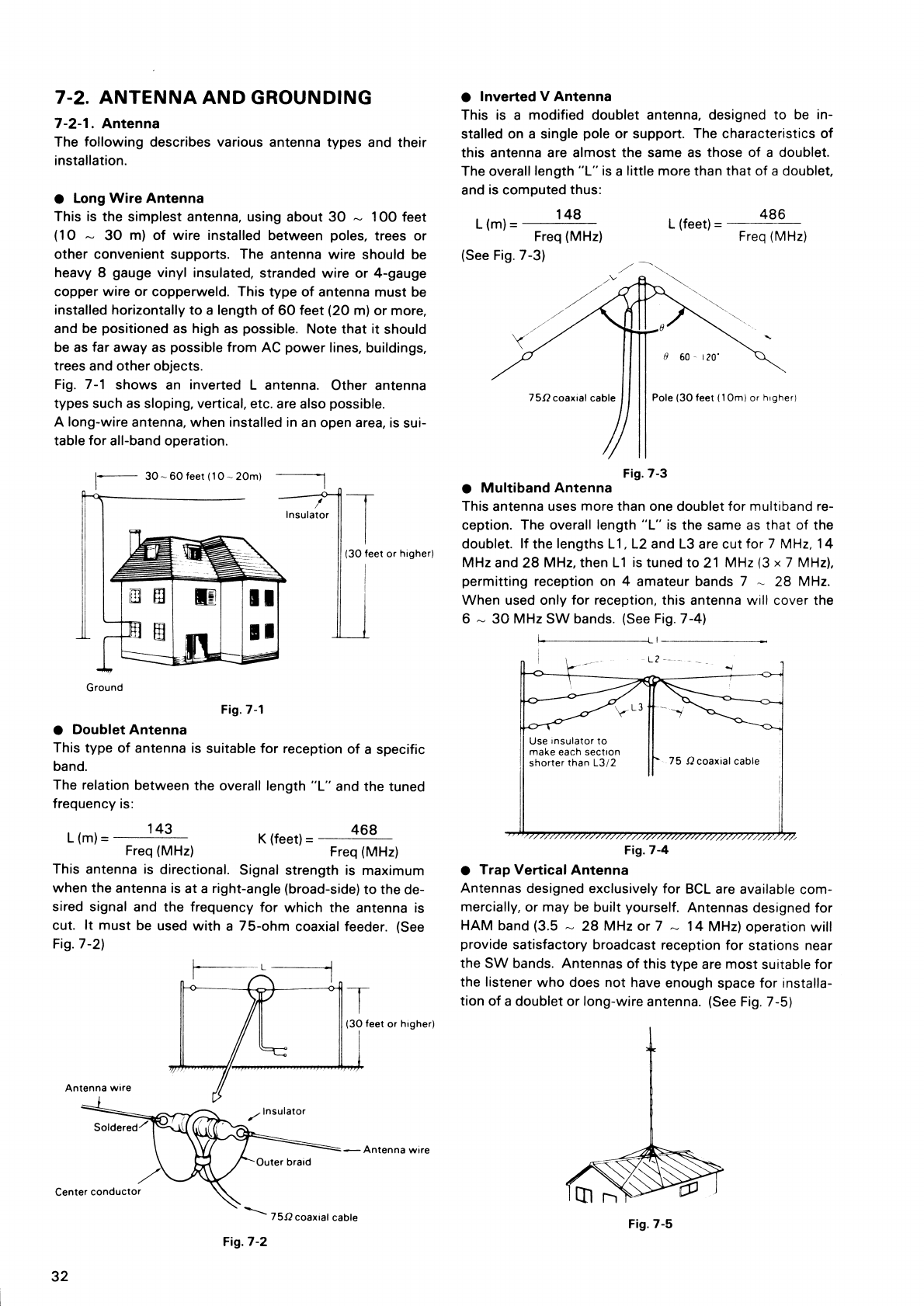
•
Doublet Antenna
This type of antenna is suitable for reception of a specific
band.
The relation between the overall length
"L"
and the tuned
frequency is:
7-2. ANTENNA AND GROUNDING
7-2-1. Antenna
The following describes various antenna types and their
installation.
•
Long Wire Antenna
This is the simplest antenna, using about 30 – 100 feet
(10 – 30 m) of wire installed between poles, trees or
other convenient supports. The antenna wire should be
heavy 8 gauge vinyl insulated, stranded wire or 4-gauge
copper wire or copperweld. This type of antenna must be
installed horizontally to a length of 60 feet (20 m) or more,
and be positioned as high as possible. Note that it should
be as far away as possible from AC power lines, buildings,
trees and other objects.
Fig. 7-1 shows an inverted L antenna. Other antenna
types such as sloping, vertical, etc. are also possible.
A long-wire antenna, when installed in an open area, is sui-
table for all-band operation.
•
Inverted V Antenna
This is a modified doublet antenna, designed to be in-
stalled on a single pole or support. The characteristics of
this antenna are almost the same as those of a doublet.
The overall length
"L"
is a little more than that of a doublet,
and is computed thus:
•
Multiband Antenna
This antenna uses more than one doublet for multiband re-
ception. The overall length
"L"
is the same as that of the
doublet. If the lengths L1, L2 and L3 are cut for 7 MHz, 14
MHz and 28 MHz, then L1 is tuned to 21 MHz (3 x 7 MHz),
permitting reception on 4 amateur bands 7 – 28 MHz.
When used only for reception, this antenna will cover the
6 – 30 MHz SW bands. (See Fig. 7-4)
This antenna is directional. Signal strength is maximum
when the antenna is at a right-angle (broad-side) to the de-
sired signal and the frequency for which the antenna is
cut. It must be used with a 75-ohm coaxial feeder. (See
Fig. 7-2)
•
Trap Vertical Antenna
Antennas designed exclusively for BCL are available com-
mercially, or may be built yourself. Antennas designed for
HAM band (3.5 . 28 MHz or 7 – 14 MHz) operation will
provide satisfactory broadcast reception for stations near
the SW bands. Antennas of this type are most suitable for
the listener who does not have enough space for installa-
tion of a doublet or long-wire antenna. (See Fig. 7-5)
32


















